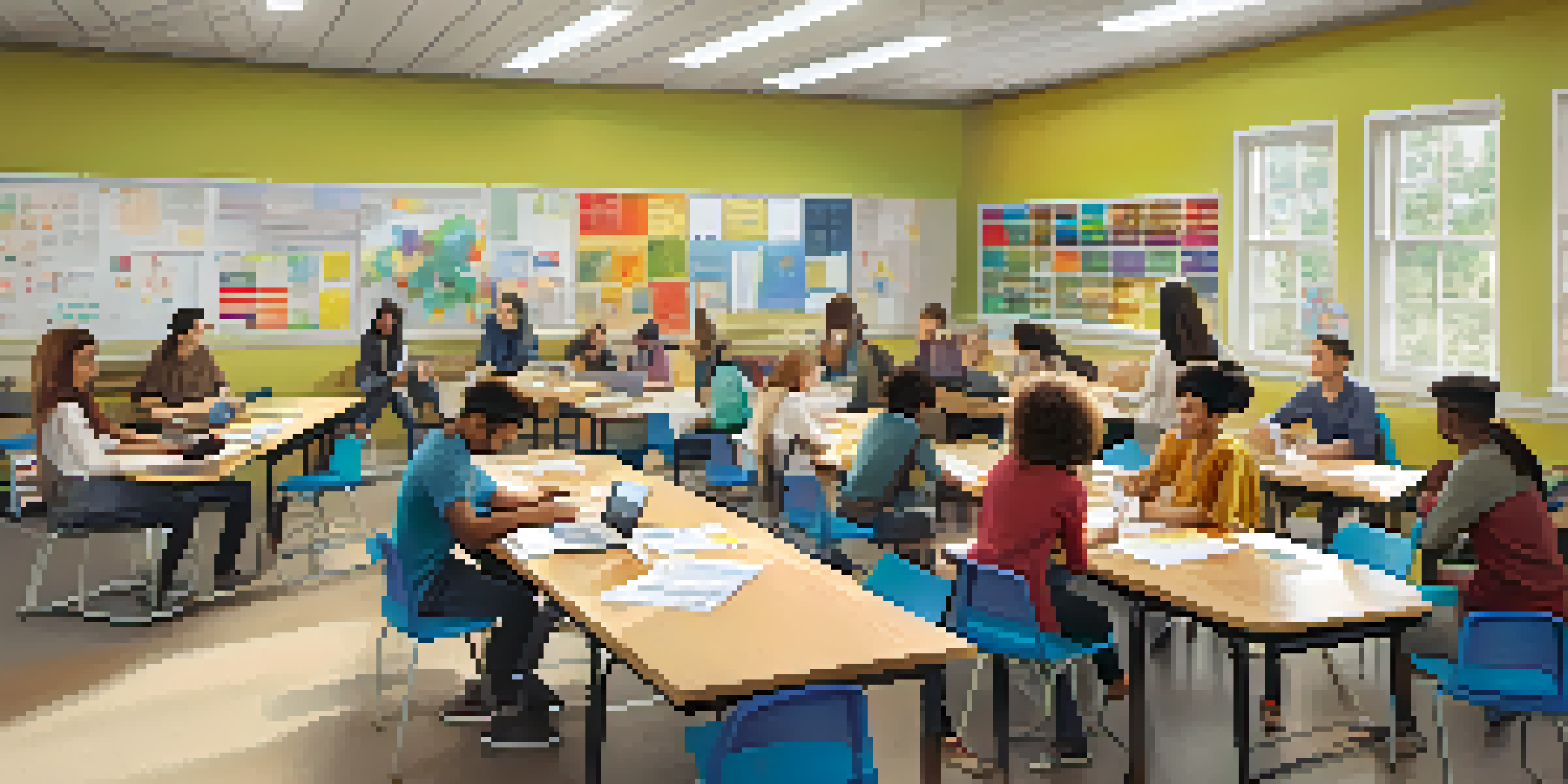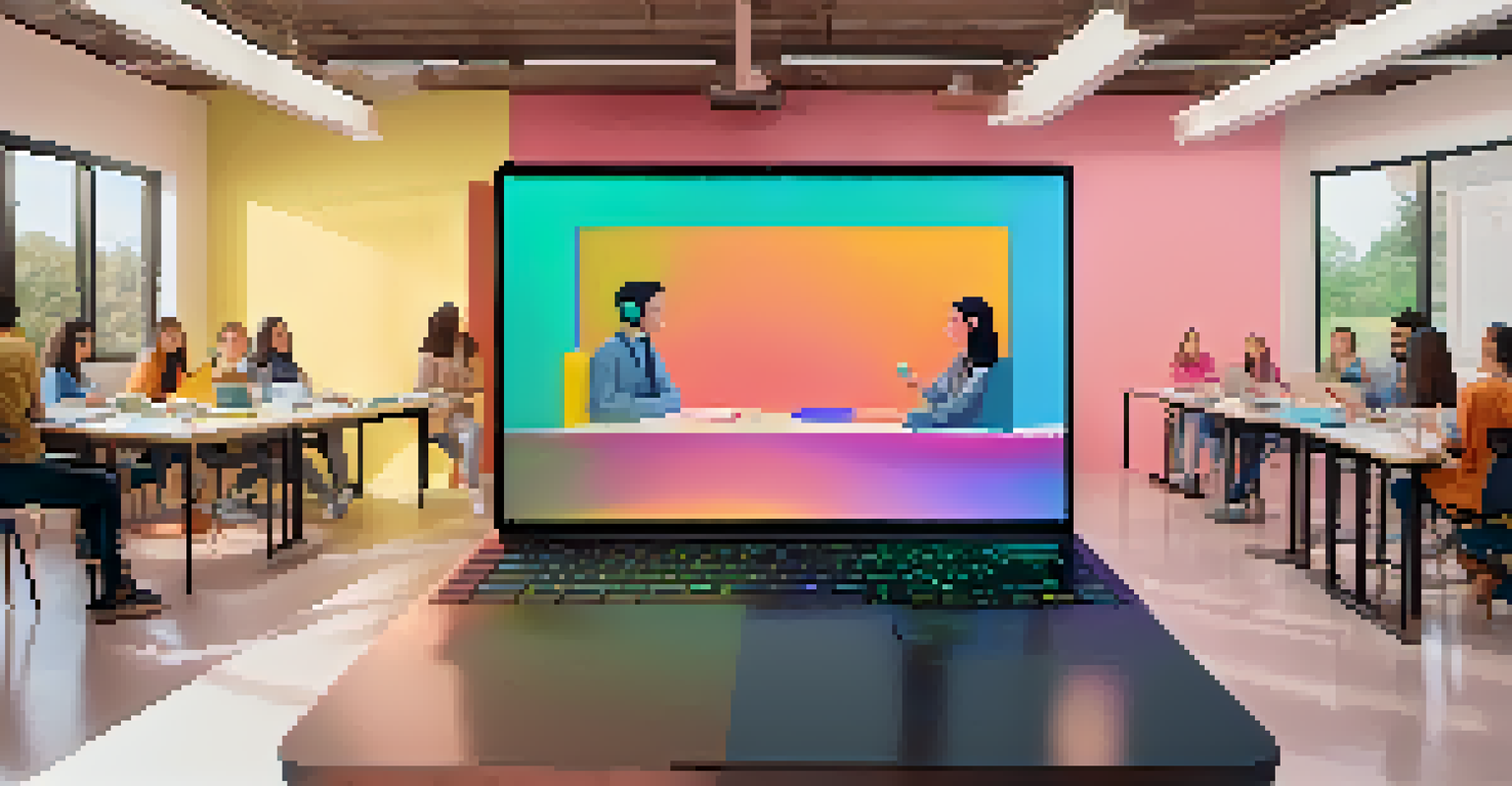Collaborative Learning: Synchronous vs. Asynchronous Approaches

Understanding Collaborative Learning: A Brief Overview
Collaborative learning is an educational approach that encourages students to work together to solve problems, complete tasks, or learn new concepts. This method fosters not only knowledge sharing but also the development of essential soft skills like communication and teamwork. In collaborative learning, the interaction between learners can greatly enhance the learning experience, making it both engaging and effective.
Alone we can do so little; together we can do so much.
At its core, collaborative learning is about leveraging the strengths of diverse groups. Different perspectives can lead to richer discussions and deeper understanding of the material. In today’s digital age, this approach has evolved to include various formats, including synchronous and asynchronous methods, each with their unique benefits and challenges.
Understanding these different approaches is crucial for educators and learners alike. Whether working in real-time or at their own pace, students can harness the power of collaboration. Let’s dive deeper into the specifics of synchronous and asynchronous collaborative learning.
Defining Synchronous Learning: Real-Time Collaboration
Synchronous learning refers to educational experiences that occur in real-time, where participants interact simultaneously. This format often includes live classes, video conferences, or group chats. The immediate feedback and dynamic exchanges can create a vibrant learning atmosphere, energizing participants as they engage directly with one another.

One of the main advantages of synchronous learning is the sense of community it fosters. Students can solve problems together on the spot, ask questions, and clarify misunderstandings right away. This immediate interaction often leads to a deeper connection and engagement with the material, as learners feed off each other's energy and enthusiasm.
Collaborative Learning Enhances Skills
This educational approach fosters knowledge sharing and develops essential soft skills like communication and teamwork.
However, synchronous learning isn't without its challenges. It requires all participants to be available at the same time, which can be difficult depending on different schedules and time zones. This limitation can restrict participation and may not suit everyone's learning style.
Exploring Asynchronous Learning: Flexibility and Autonomy
Asynchronous learning, on the other hand, allows participants to engage with the material and each other at their own pace. This format includes discussion boards, recorded lectures, and online assignments that can be accessed anytime. The flexibility it offers is a significant draw for many learners, especially those balancing other commitments.
The whole is greater than the sum of its parts.
This approach is particularly beneficial for students who may need more time to process information or are in different time zones. Asynchronous learning promotes self-directed learning, encouraging students to take charge of their own education. This can lead to a greater sense of ownership and responsibility for their learning outcomes.
However, the lack of immediate interaction can sometimes lead to feelings of isolation. Students might miss out on the spontaneous discussions and collaborations that happen in real-time settings. It’s essential for educators to create structured opportunities for engagement, even in an asynchronous environment.
Comparing the Benefits of Synchronous and Asynchronous Learning
Both synchronous and asynchronous learning have unique benefits that cater to different learning preferences. Synchronous learning is great for those who thrive on interaction and immediate feedback. It can create a lively environment where ideas are exchanged rapidly, making learning feel dynamic and collaborative.
On the flip side, asynchronous learning offers unparalleled flexibility, making it ideal for self-motivated learners or those juggling multiple responsibilities. This format allows students to digest content at their own pace, revisit challenging materials, and engage with peers when it suits them best.
Synchronous vs. Asynchronous Learning
Synchronous learning offers real-time interaction, while asynchronous learning provides flexibility, catering to different learner preferences.
Ultimately, the choice between these two methods often depends on the specific needs and contexts of the learners. Some may prefer the live interaction of synchronous sessions, while others might excel in the independence offered by asynchronous learning.
Choosing the Right Approach for Your Learning Environment
When deciding between synchronous and asynchronous learning, consider the goals of your course and the preferences of your students. If your primary aim is to encourage collaboration and real-time problem-solving, synchronous sessions may be the way to go. They work particularly well in courses that benefit from discussion and immediate feedback.
Conversely, if your learners require flexibility due to their schedules or learning styles, asynchronous learning could provide the solution. This approach allows students to engage with the content and each other in a way that best fits their individual needs.
It's also worth noting that a blended approach, combining both synchronous and asynchronous elements, can often yield the best results. This allows for the dynamism of live interaction while also accommodating various learning preferences.
Tools and Technologies for Synchronous Learning
To facilitate synchronous learning, there are numerous tools available that enhance interaction and engagement. Platforms such as Zoom, Microsoft Teams, and Google Meet allow for live discussions, video conferencing, and screen sharing, making it easy to collaborate in real-time. These tools often come equipped with features like breakout rooms, which can further enhance collaborative efforts.
Additionally, online whiteboards and collaborative documents like Google Docs can help participants brainstorm and contribute simultaneously during sessions. These technologies create a shared space for ideas to flow freely, making the learning process more interactive and enjoyable.
Tools Enhance Learning Experiences
Various technologies support both synchronous and asynchronous learning, making collaboration and engagement more effective.
However, it’s essential to ensure that all participants are comfortable using these tools. Providing training or resources on how to navigate these platforms can help maximize participation and make the experience smoother for everyone involved.
Tools and Technologies for Asynchronous Learning
Asynchronous learning also benefits from a wealth of tools designed to enhance the learning experience. Learning Management Systems (LMS) like Moodle or Canvas provide a structured environment for accessing materials, submitting assignments, and participating in discussions. These platforms make it easy for students to engage with content at their convenience.
Discussion boards, forums, and social media groups can foster community interaction without the constraints of time. Students can share ideas, ask questions, and provide feedback when they are ready, which can lead to more thoughtful contributions and deeper discussions.

Moreover, recorded lectures and video tutorials allow learners to revisit complex topics at their own pace, reinforcing their understanding. This flexibility can be particularly beneficial for challenging subjects, enabling students to absorb information more effectively.